The destructive force of tornado season has made itself abundantly evident in the Midwest this week, and New Yorkers can sometimes develop a false sense of security by the rarity of twister activity here.
But tornados do occasionally make their way to the five boroughs.
A 2007 tornado in Brooklyn and Staten Island caused widespread damage of the kind that states like Missouri and Oklahoma (along the so-called ‘tornado alley’) experience almost yearly. The Bronx even saw a tornado back in 1974, further bedeviling the residents in a troubling year.
But all of these pale in comparison to the terrifying storm which hit the area in the summer of 1895, nearly decimating a neighborhood in Queens.
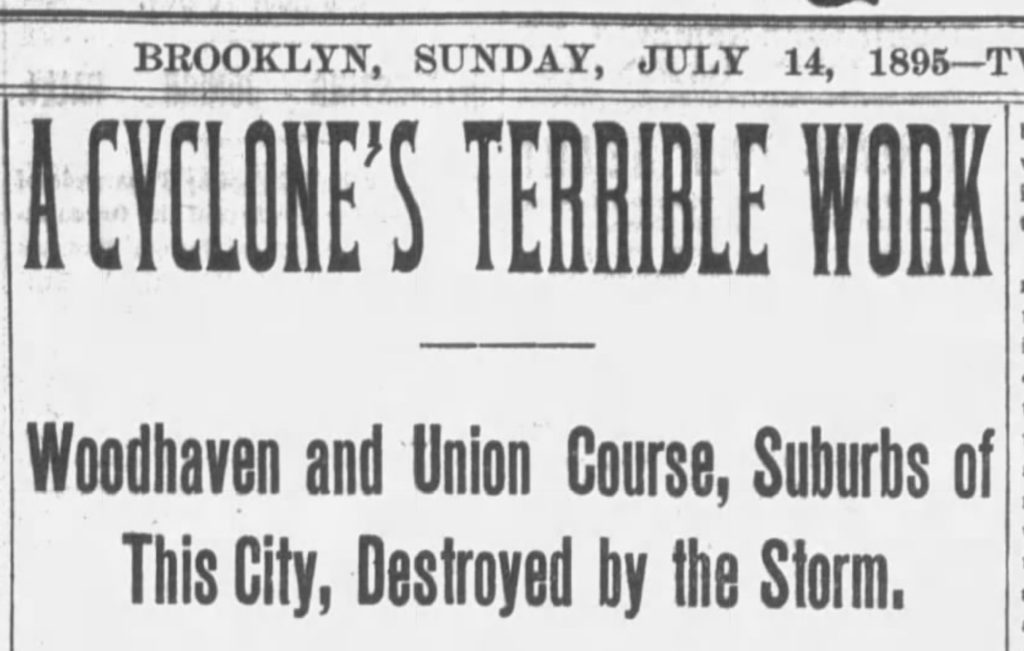

On the afternoon of July 13, 1895, a horrendous tornado — a “hellish wind” — ripped apart the New Jersey town of Cherry Hill (pictured below). A New York Times reported that “nearly every building in the place bears evidence of the force of its power.” Some claim the village’s name became so associated with that destructive storm that it later had to change its name to North Hackensack.
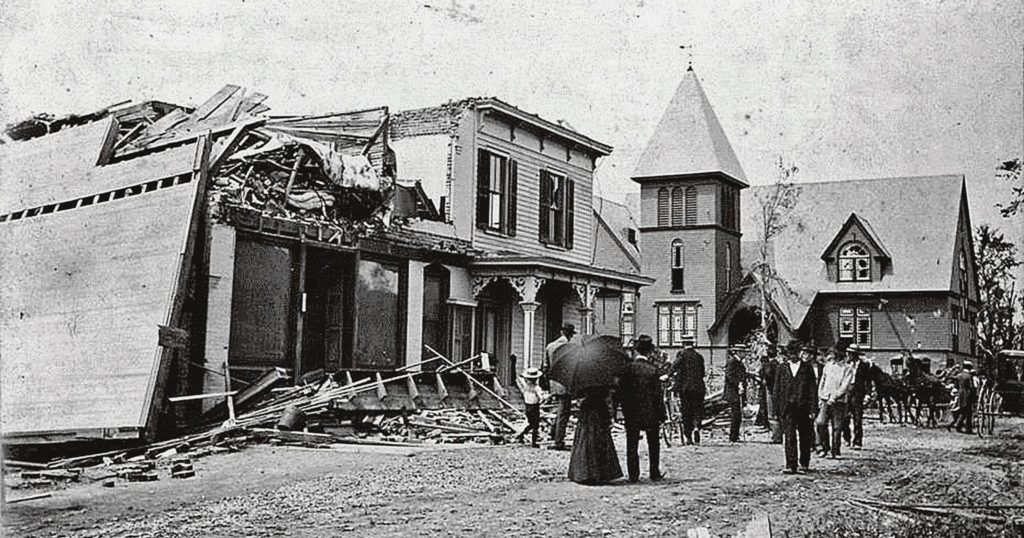
That same storm swept into New York, whipping through Manhattan via Harlem, leaping across the East River and striking the village of Woodhaven.
The rather unusual reaction of New Yorkers to this storm caught my attention, as reported by the New York Sun: “Yesterday was another eventful day in the history of Woodhaven, Long Island. The tornado on Saturday that killed one, wounded forty, demolished fifteen houses and partially wrecked thirty more, was followed by the largest crowd of sightseers that ever collected in town limits.”
The paragraph ends, “Altogether it was a great day in the town.”
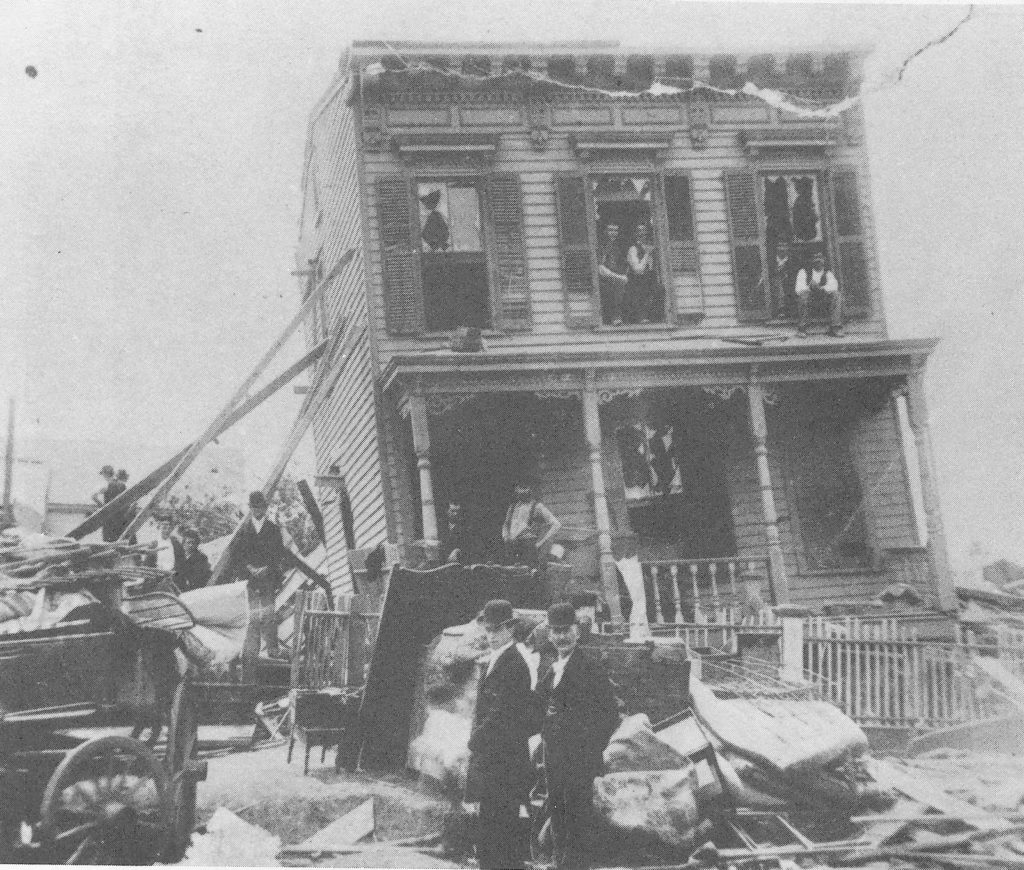
Throngs of locals from New York and Brooklyn took the newly constructed elevated railroads into Queens to witness the carnage, to help out the victims or, in very isolated cases, snag a souvenir of this rare event.
The Sun reports that over 100,000 people visited the site over the next day, and while most were there to assist those in need — a genuine outpouring — still others came merely to witness the pandemonium.
Below: an illustration on the schoolhouse, from the New York Tribune:
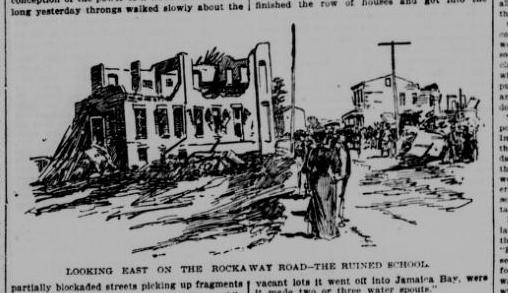
For those lucky to own Woodhaven’s saloons — and there were many, the village being near the former Union Course racetrack — the vicious tragedy drew bewildered drinkers. “The saloons that were not wrecked were open. Some of those that were wrecked had beer on tap, and the crowd drank as fast as the spigots could be put in the kegs. Nobody went thirsty.” [Sun]
The tornado tore up pieces of the village and redistributed them at random. One man had four roofs in his backyard; cows and chickens were deposited into new homes. The Sun reports the bodies of dozens of chickens, plucked of their feathers by the winds.
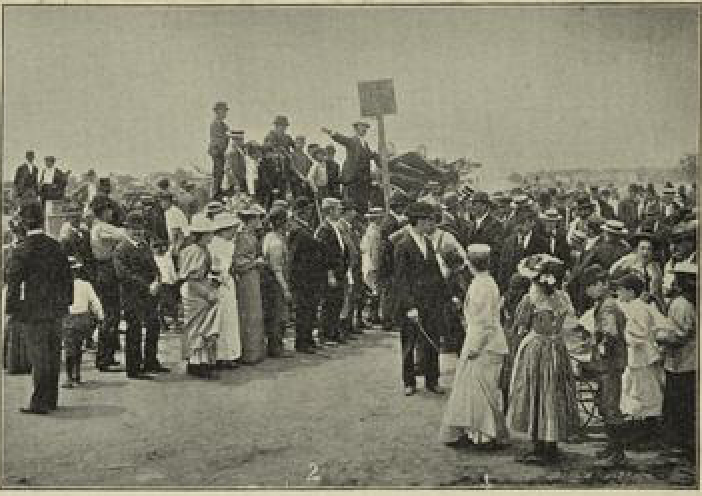
This being the days before FEMA and decent insurance plans, many families were left to beg.
Many of the gawkers and sightseers began pulling money from their wallets. An enterprising lawyer took an empty beer keg and asked people to fill it with money for the needy. Soon volunteers carried signs saying “Help fill the barrel!” The throngs were directed past the money barrel as a man cried, “You’ve spent your lives emptying kegs. Fill this one!”
Below: the scene at Rockaway Boulevard at 83rd Street
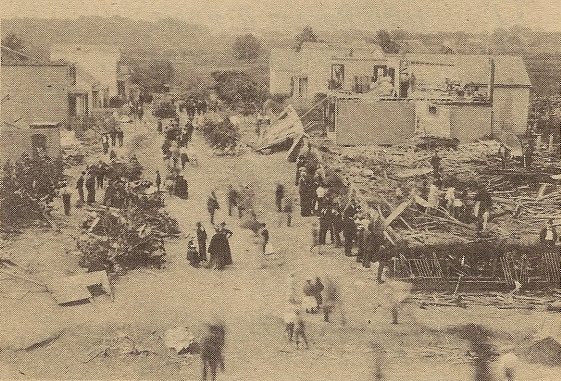
The scene took on the feel of a macabre carnival, with gory recounts of the storm and cries from virtual carnies driving more people to arrive and donate. “In the keg! In the keg! In the k-e-g!”
Soon there were many empty kegs (and boxes and bags) distributed throughout the wreckage, gathering funds for the homeless and wounded.
From my experience with late 19th century New Yorkers, I’m going to take a wild guess and say that not all that money ended up in the proper hands. But for the most part, it seems, it was an overflow of generosity and charity that day.
As the sun set upon the ruins of Woodhaven, the money was compiled at the schoolhouse — pictured below, its roof gone and walls torn away — while “perhaps 5,000 people” gathered outside.
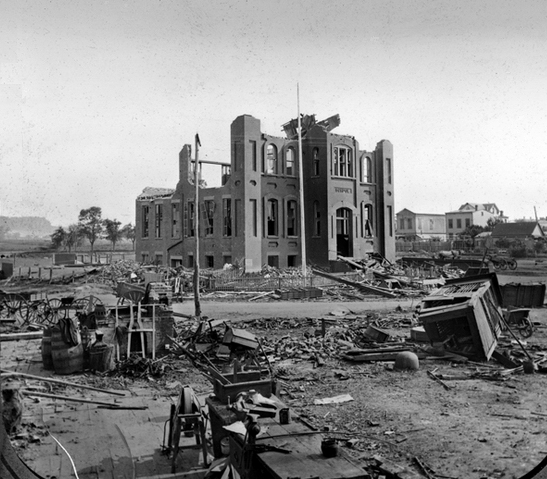
In the end, two people from Queens died during that storm — a pregnant 17 year old struck by a beam and a five-year-old boy. (Actually, the Times reports the boy lived; the Sun says he died. Such was the way of New York newspapers in 1895.)
One rather remarkable story of survival soon emerged — the ten-year-old daughter of the village milkman was walking her cow back to the barn when the tornado picked up both her, the cow and the barn. The barn was torn to splinters and the cow thrown into Jamaica Bay. The girl, thankfully, was deposited into an onion patch, only slightly bruised. [From the New York Tribune]
Let that be a reminder of the days when Queens had barns, cows, milkmen, milkmen’s daughters — and deadly tornados!

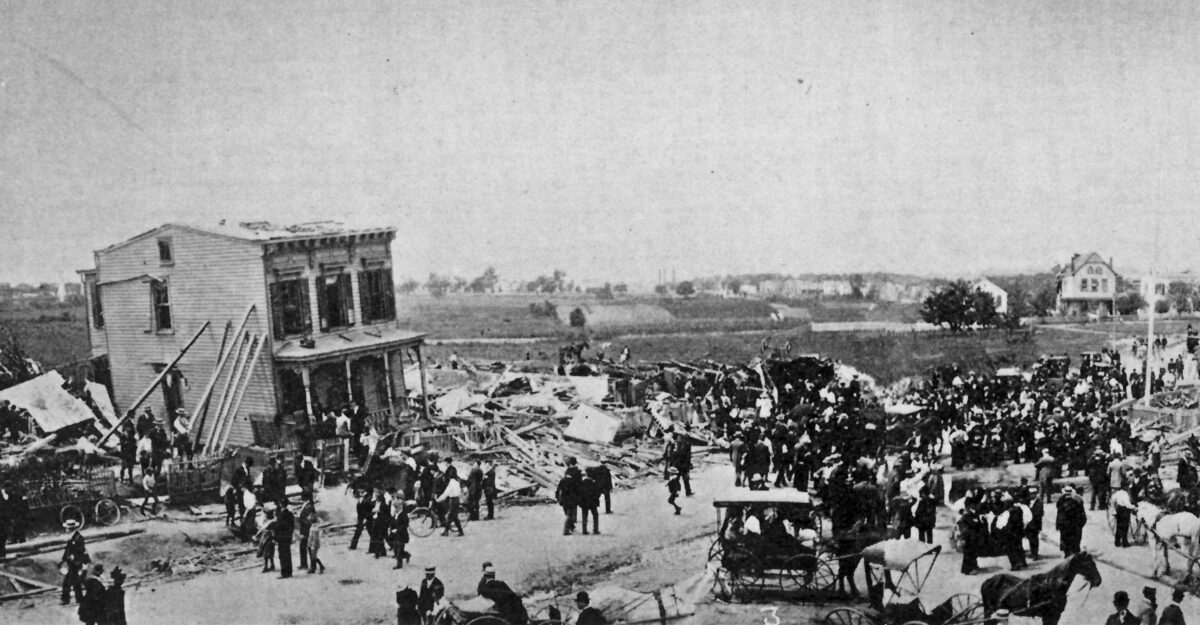
2 replies on “In 1895 a deadly tornado hit Queens, and the ruins became a tourist attraction”
Hi,
I am currently living in Ozone Park and I was wondering if you have the location for the first picture.
The house in the first picture would be on 95th Ave, the other building on 95th Ave and Rockaway Blvd, a school and later Friendly Frost and now I think a board of Ed building.